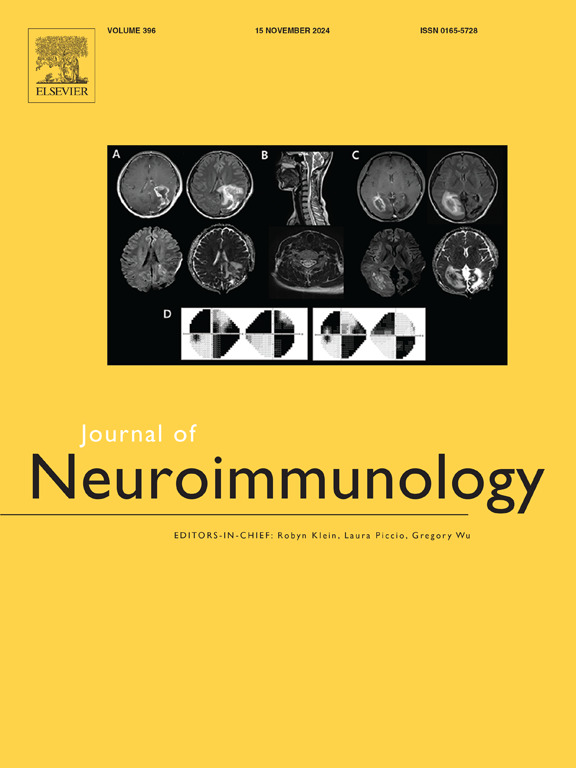Effects of androgen modifying therapies on disease activity in older men with multiple sclerosis
IF 2.9
4区 医学
Q3 IMMUNOLOGY
引用次数: 0
Abstract
Background
Anti-inflammatory properties of androgens were assessed in animal models, but only several clinical studies investigated the effects of androgen on multiple sclerosis (MS). Inflammatory activity in MS often attenuates with aging, and androgen modifying therapies (AMT), which mimic decreased androgen levels, are frequently used in older men. We aimed to investigate if the number of disease activity events would increase in older (≥55 years) male persons with MS (MPwMS) who are on AMT.
Methods
MPwMS with AMT initiation ≥55 years (AMT; n = 60) and without AMT history (no-AMT; n = 80) were included from a clinical-based observational study cohort. Clinical (relapses), Radiological (new lesions), and Disease (relapses and/or new lesions) activity events were evaluated before and after the age at AMT initiation in AMT and no-AMT groups.
Results
Age at MS onset, progressive MS rate and treatment frequencies were similar between the groups. When events before and after the age at AMT initiation (mean = 65.0 ± 7.0 years) were compared, there was a drop in the percentage of individuals with Clinical (38.5 % vs. 10 %), Radiological (46.2 % vs. 40 %) and Disease (62.8 % vs. 40 %) activity events in the no-AMT group. In the AMT group, the percentage of individuals with Clinical activity events was not as dramatically decreased (33.3 % vs. 22.2 %), Radiological activity events was increased (35.2 % vs. 46.7 %), and Disease activity events was sustained (51.9 % vs. 51.1 %). The probability of Disease activity was higher in the AMT group at 3 years of AMT initiation (40 % vs. 29 %) compared to the no-AMT group matched for disease duration, but the difference was not significant (p = 0.582).
Conclusions
Rather than the expected decrease in disease activity with age, MPwMS receiving AMT experienced sustained or increased disease activity, particularly at >65 years. Close clinical monitoring of MPwMS starting on these medications is necessary.
求助全文
约1分钟内获得全文
求助全文
来源期刊

Journal of neuroimmunology
医学-免疫学
CiteScore
6.10
自引率
3.00%
发文量
154
审稿时长
37 days
期刊介绍:
The Journal of Neuroimmunology affords a forum for the publication of works applying immunologic methodology to the furtherance of the neurological sciences. Studies on all branches of the neurosciences, particularly fundamental and applied neurobiology, neurology, neuropathology, neurochemistry, neurovirology, neuroendocrinology, neuromuscular research, neuropharmacology and psychology, which involve either immunologic methodology (e.g. immunocytochemistry) or fundamental immunology (e.g. antibody and lymphocyte assays), are considered for publication.
 求助内容:
求助内容: 应助结果提醒方式:
应助结果提醒方式:


